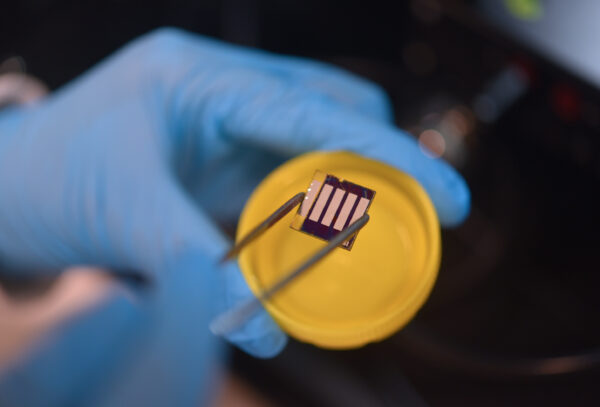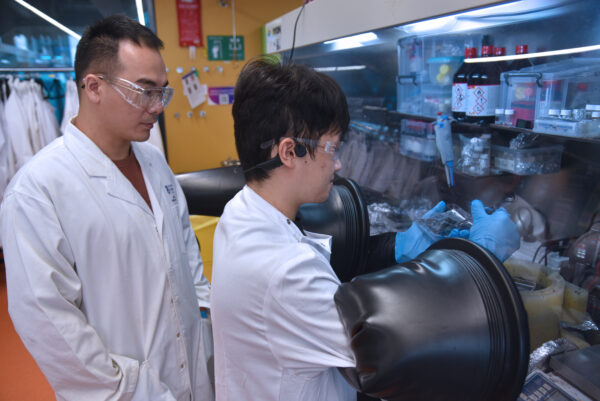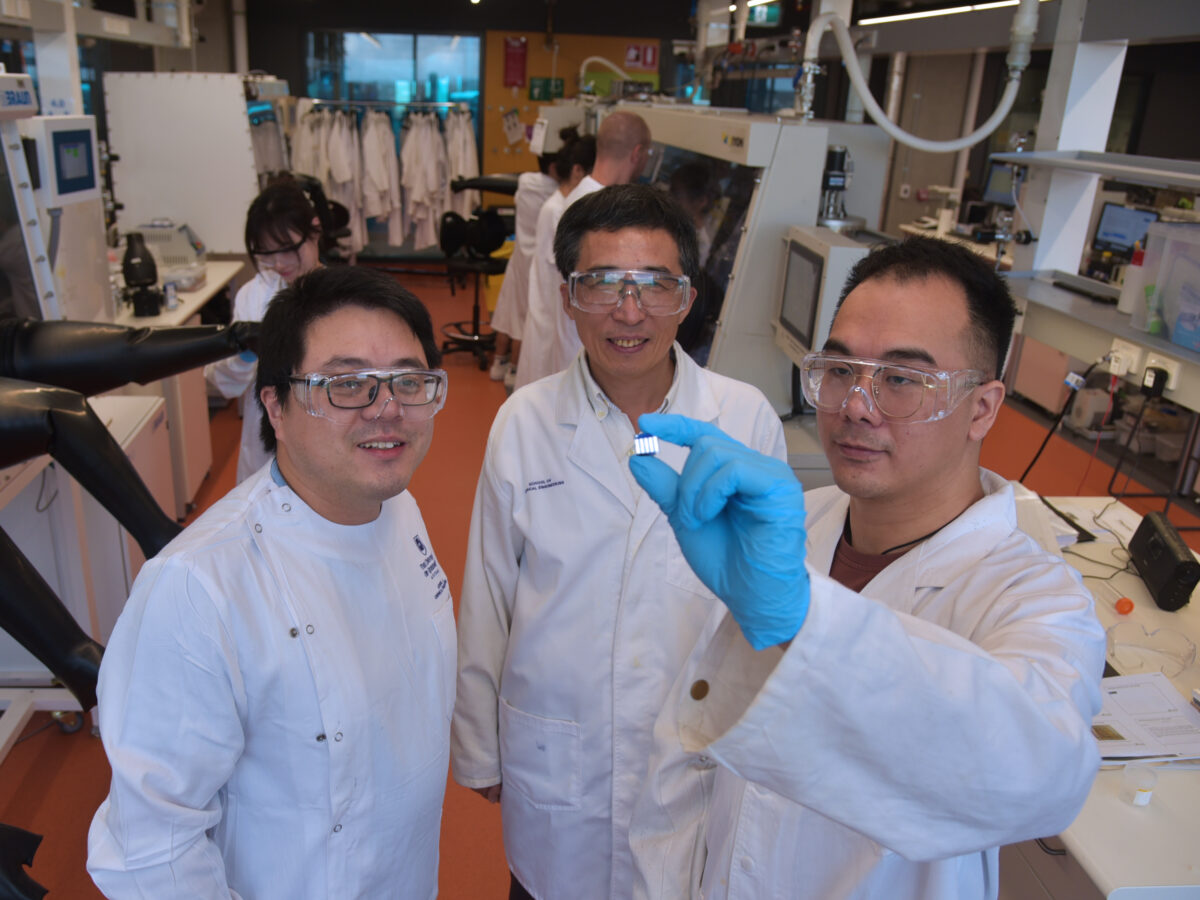University of Queensland (UQ) researchers have unveiled a tin halide perovskite (THP) solar cell at a certified record efficiency of 16.65%.
Working across UQ’s Australian Institute for Bioengineering and Nanotechnology, and the School of Chemical Engineering, Research Lead Professor Lianzhou Wang said the certified reading achieved by his lab was nearly one percentage point higher than the previous best for THP solar cells.
“It might not seem like much, but this is a giant leap in a field that is renowned for delicate and incremental progress,” Wang said.
“The reading is in line with many silicon-based solar cells currently on the market but with the potential to be cheaper and quicker to make.”

Image: University of Queensland
Research findings are published in the Nature Nanotechnology journal, called Homogeneous 2D/3D heterostructured tin halide perovskite photovoltaics, and outline methods to achieve casium incorporated THP solar cells that deliver an excellent power conversion efficiency of 17.13% (certified 16.65%).
Wang said the flexibility and versatility of THP cells – when coupled with improved efficiency – could make them the ideal candidate for household photovoltaic solar panels to be used both outdoors and indoors.
“Beyond solar panels, the approach we’ve used in this paper could also be used for other devices that require high-quality perovskite films like lasers, photodetectors, and transistors,” Professor Wang said.
“We could eventually see THPs used for engineering challenges, including as a lightweight solution to power electric aircraft – the sky really is the limit.”
Potential of THP cells
Professor Wang’s THP solar cell record comes five years after his lab set a benchmark for power conversion efficiency in solar cells using quantum dots, which inspired attempts to improve THP thin-film solar cell performance.
“There is great commercial potential in THP solar cells because perovskite devices are more sustainable to produce than silicon-based solar cells,” He said.
“The benefit of THP’s is that we’re dealing with more eco-friendly tin and not the toxic lead that is widely used in most of the perovskite solar cells, meaning they can be safely installed around the home.”

Image: University of Queensland
The use of tin precursor had previously been problematic because of the sub-standard quality of the fast-crystalline thin films used in manufacturing THP solar cells, leading to a dip in efficiency.
Dr Peng Chen said the group overcame this hurdle by incorporating caesium ions to improve the microstructure and reduce defects in the THP film.
“This is what allowed us to reach a record level of efficiency while still having a product that would pass stringent environmental checks,” Dr Chen said.
“I think we have a formula now that will only keep improving.”
This content is protected by copyright and may not be reused. If you want to cooperate with us and would like to reuse some of our content, please contact: editors@pv-magazine.com.









2 comments
By submitting this form you agree to pv magazine using your data for the purposes of publishing your comment.
Your personal data will only be disclosed or otherwise transmitted to third parties for the purposes of spam filtering or if this is necessary for technical maintenance of the website. Any other transfer to third parties will not take place unless this is justified on the basis of applicable data protection regulations or if pv magazine is legally obliged to do so.
You may revoke this consent at any time with effect for the future, in which case your personal data will be deleted immediately. Otherwise, your data will be deleted if pv magazine has processed your request or the purpose of data storage is fulfilled.
Further information on data privacy can be found in our Data Protection Policy.